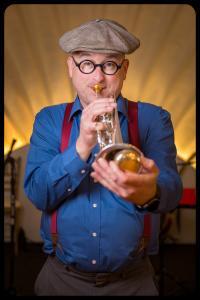
Clint Baker is one of the most important musicians in the contemporary Traditional Jazz and Swing world. Besides being a first-class musician (a multi-instrumentalist), he is also a bandleader, educator, jazz historian, and a mentor to younger musicians.
Hal Smith: How did you become interested in music?
Clint Baker: I did not come to jazz through family, exactly. I became very interested in music when I was quite young; younger than most people—around eight or nine. I started thanks to my dad who, although he’s not a musician, is very interested in music. He had a record collection. So when I was a little kid, that record collection was always present in the house. Early on, my father bought me a record player, and he bought me some swing music records.
One of the first records I think I bought with my own money was a record called The Benny Goodman Story, and I also bought a Count Basie record. I had been listening to KMPX, a traditional jazz and swing radio station based in San Francisco. I just caught the last year of them on the radio and I think that formed my idea of what kind of music I wanted to hear and be interested in. I listened to that station constantly for the time that it was on the air, and I think it formed my taste more than anything. Even though I was crazy about listening to music, I didn’t have any notion that I would ever play.
You play almost all of the instruments that are commonly used in traditional jazz and swing bands. Which one did you take up first?
Later, in elementary school, I took a musical aptitude test and I did well. My mother, who saw my failures in athletics, told me I should try an instrument, and I ended up getting a clarinet when I was around 10. So my first instrument technically was the clarinet.
I was a big kid with long arms, and by the end of elementary school the music teacher had moved me to trombone. I was always in the school ensembles—every one I could be in: orchestras, concert bands; whatever was possible—and I took some private lessons on trombone and later tuba. I learned how to read music and learned how to play in sections. And section playing, particularly as a trombone player, is a big deal. I always thought that made me a better musician in general; gave me deeper and broader musical understanding.
I’d spend my money on recordings and instruments. And I think that’s how I picked up the cornet. But I wasn’t very good at it. I didn’t have any natural aptitude for it.
Which instruments did you subsequently learn to play?
I started learning how to play instruments other than trombone and tuba, right away. I had an idea: if I could learn an instrument enough to get my friends interested in wanting to play the instrument, I could have them in my band. And then I would try to give them pointers. It was a remarkably successful process, and it also led to a lot of work as a sideman. Now I play professionally on trombone, tuba, cornet/trumpet, bass, drums, banjo, guitar, saxophone, and clarinet.
When did you become a bandleader?
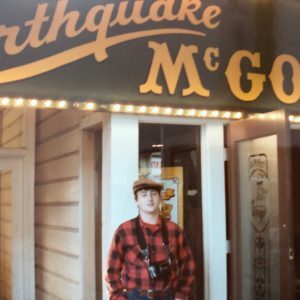
I started my first band in 1984, in seventh grade. Band Director Linda Snyder at Graham Middle School in Mountain View encouraged me. I was put in the beginning jazz band, and I was never afraid to get up and play solos. That never bothered me. It scared everybody, but it never scared me. I was always happy to get up and play. I was a very nerdy, quiet, introverted kind of kid. But I guess the music empowered me.
Around 1982, I heard the Turk Murphy Jazz Band on radio on KJAZ. Sunday mornings they broadcast a show from San Francisco. My father found the show while searching the FM dial for interesting stuff. From that point on I was pretty much hooked on traditional jazz music. It took me probably three minutes of listening to that show to decide that this was the music, traditional jazz, whatever you want to call it, that I was going to be interested in.
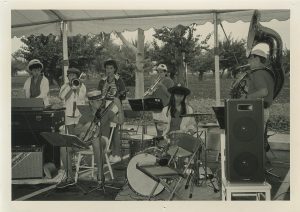
I told Linda Snyder I wanted to start a Dixieland band at school. She bought some music for me, but she told me very specifically that she wasn’t going to help me run the band, that I was capable of doing it myself. So rehearsals for my first band commenced in the living room of my mom and dad’s house. My band was never connected to any institution. I did it all on my own. We didn’t really have a name initially; we performed at school functions as “The Dixieland Band.” Later, at my Dad’s suggestion, we became the Greasy Kid Stuff Goodtime Jazz Band.
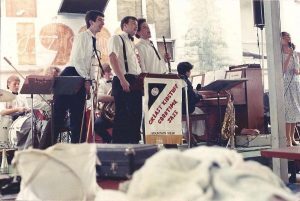
I think our first performance was at a jazz concert night that used to be held at a pizza parlor that had a stage called Fargo’s in Mountain View. That first band was seven pieces, made up entirely of my classmates, and I picked the people I thought I’d have the most fun working with. My band was more than 50 per cent girls. We had a trumpet player, trombone, clarinet, and a full rhythm section. I played tuba which I had picked up because I wanted a solid rhythm section in my band. My grandfather Barney used to take me to flea markets all the time, and I started buying instruments for myself and sometimes for the band. I did that for years and years and years, and I think there are still people who play instruments that I loaned them.
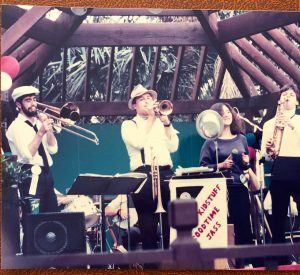
We worked from an arrangement book initially, and we cut a little demo tape and sent it to the Sacramento Jazz Festival. They hired us as a youth band in my junior year. But that same year my trumpet player left the band, and I took over playing the cornet. That was a big revelation, because then I could stop playing from arrangements.
I also don’t transcribe solos. I play my own. When I was younger, I copied solos; I learned them from records. But I never performed any of them. I feel like I have my own voice, and that’s important. So I started looking for other musicians who wanted to improvise.
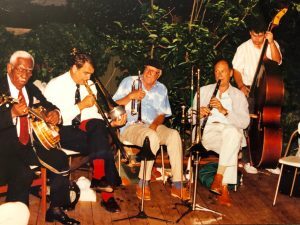
The message I got very strongly is that you learn the craft, and then you make your own music. From Bob Helm to Ray Skjelbred, to Turk Murphy and Bill Carroll, guys that came up in the West Coast traditional jazz world, and from the New Orleans jazz musicians like Willie and Percy Humphrey and Narvin Kimball, it was always the same: you have to have your own style, and it has to be recognizable immediately. It’s your sound print. It’s your thing. And if a person can recognize your playing, that is the biggest accomplishment.
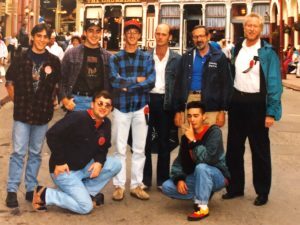
Growing up, I knew a lot of band directors. Dave Adams was the band director at Palo Alto High School. He got a call from this restaurant in Palo Alto called Compadres that was hosting a dinner for the Preservation Hall Jazz Band. Preservation Hall was coming to town to play at Stanford University. The restaurant wanted a Dixieland band, so I put a new band together, combining members of Greasy Kid Stuff with some students from Palo Alto High School to create the Clint Baker New Orleans Jazz Band.
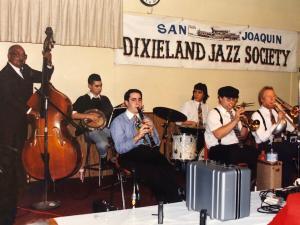
The band included Robert Barics, Marty Eggers, Jason Hansen, Monte Reyes, and Tom Wilson. That’s how we met Percy Humphrey, Dr. Michael White, John Royen, and Narvin Kimball. The Preservation Hall players were very encouraging and very kind to us. I think that might’ve been the thing that really got us thinking that maybe we were doing something right.
What was the first band you played in as a sideman?
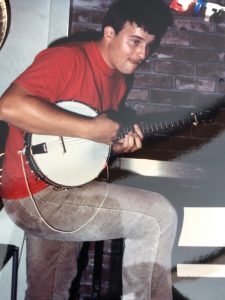
When I was 17, I started working on banjo with clarinetist John Stringer’s band at a venue in Mountain View called The Louisiana Territory. I did the best I could, learning as much as I could. I was hired as a regular substitute two years later, and by that point I was just one of the guys. I was playing bass, and they were happy to have me on bass. I never really went through a long, difficult hazing process. I got on really well with the older musicians. A lot of younger guys had difficulties with the older guys. I never had that problem. I don’t know why. I think it was because they knew that I was serious and I was paying attention and I wasn’t competing. I asked questions. I was respectful. I think my upbringing prepared me for that, to be respectful.
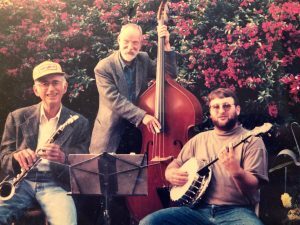
I never really planned to be a professional musician. But by the time I was in high school I was working regularly, and by the end of my senior year I was like, “Well, I guess this is what I’m going to do.” I was very quick to learn what I needed to learn on the job: getting there on time, showing up, being dressed correctly, being ready to play, having your instrument in working order, and learning tunes as quickly as I could. I still had a foot in school, the music programs that I came up in, and I was also working with older and middle aged players on commercial and professional jobs. And I was working with my own band, and I was doing all of it simultaneously.
Which musicians did you hear live who influenced you? Who were some of your main mentors?
The musician I first played with in my earliest days was Jim Borkenhagen in the Zenith Jazz Band. I drove him around to gigs and spent a lot of time with him. He was a very kind guy and very subtle. Earl Scheelar helped get me in that band. Also, Jim Klippert was deeply influential in my earliest years.
The next level of development started when I began working with Tom Sharpsteen and Mike Fay. Both of them had played New Orleans music for decades and they became huge inspirations for me.
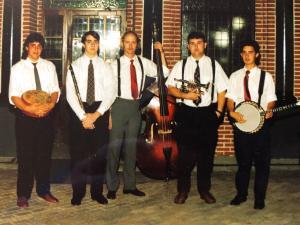
I also got to work with some of the musicians who were associated with the Turk Murphy band. I didn’t really know Turk very well. I just talked to him a few times, but I give him credit for inspiring me to pursue the history of jazz. I think that’s the biggest thing he gave me. I played with Bob Helm, Wally Rose, Bill Carroll, and Pat Yankee in a band called the San Francisco Legacy Jazz Band. Later, Bob Helm worked in my own band at Café Borrone—and that was all because Leon Oakley was there. I also worked with Bob Schulz in several different groups.
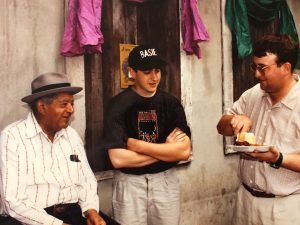
I got to play with both Willie and Percy Humphrey. I didn’t have tons of contact with them, but the little bit of time I did spend with them was seismic.
I was also lucky to connect with George Fleming, a great trumpet player from New Orleans and McNeal Breaux, a New Orleans bass player. George and McNeal left New Orleans pretty early on. George worked in Fate Marable’s bands on the boats. McNeal was the main bass player on the New Orleans Jazz Legends Live sessions in 1961. I met George working with Mal Sharpe at the No Name Bar, in the late ’80s and early ’90s, and Jim Klippert introduced me to McNeal.
George and McNeal were very good examples of old school professionalism, and that’s what I learned from them. It was really impressive how these guys presented themselves, how they took care of their business, how they came to the gig prepared, ready to go, in a good head space, and ready to do the job. George was a straight up old pro. He played beautifully, but mostly it was his aura of goodness that I remember.
What are some of the highlights of your career as a bandleader and also as a sideman?
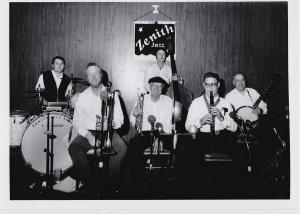
During the 1990s, I worked regularly for traditional jazz music contractors playing a lot of corporate jobs in Silicon Valley and on the festival circuit. In addition to pickup and festival bands, I was working with Zenith and Black Diamond Blue Five, a band led by George Knoblauch. I was proud to be a founding member of BDBF, and played cornet in that band from its formation in 1991 until recently when George passed away. I also have very fond memories of playing a variety of instruments in Robbie Schlosser’s Magnolia Jazz Band, which is still active. In the ’90s there were probably 10 to 15 professional traditional jazz bands active in the San Francisco area, and I played with all of them.
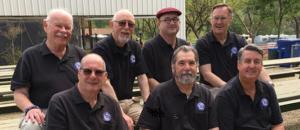
I’ve also had the pleasure to work with the Grand Dominion Jazz Band for the last 10 years or so. That band is very much a festival band with members from across the country. And I toured for about eight years with the Hot Club of San Francisco, a Django Reinhardt type band, put together by Paul Mehling—who is one of the first people to start a hot club band in the United States. I think I’ve been to just about every state in the union playing bass with Hot Club.
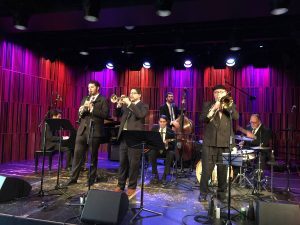
Several years ago I toured extensively with the Roadrunners, led by Hal Smith. I really love all the people in that band very much and enjoyed working with them. For the last couple of years, I have been pleased to play the role of Kid Ory with Hal Smith’s On The Levee Jazz Band. It’s inspired by the Ory band of the 1950s, and includes some great young musicians from New Orleans.
I also toured Europe with Big Bill Bissonette and had the great pleasure of visiting Japan multiple times to play with the New Orleans Rascals, thanks to my friendship with Tom Sharpsteen and Mike Fay.
Last, I want to mention the great time I have playing with Paul Cosentino of the Boilermaker Jazz Band. I have fond memories of traveling to Paul’s hometown, Pittsburgh, and touring the East Coast. While we were traveling, we played a shim sham for Frankie Manning, the great dancer, and performed at the Smithsonian institution. Paul’s been my buddy for years, and we literally met at the feet of Willie and Percy Humphrey at Preservation Hall in 1993.
As a bandleader, one of my favorite experiences was definitely playing at the New Orleans Jazz and Heritage Festival. We got the invitation towards the end of 1991 from Dr. Michael White. They flew us down, and we played. The performance was 45 minutes and pretty extraordinary. The crowd was on its feet after every number. None of us had ever played for that many people before. There were a couple thousand people in the Economy Hall Tent. After the first tune, we got a screaming standing ovation. The kind of gigs we play as traditional jazz musicians are often background music jobs, so this was intense.
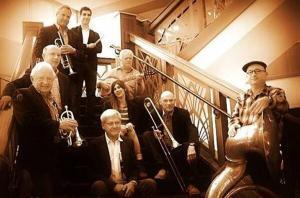
What are some of your favorite recordings that you have made?
In 1995, Chris Tyle of the Silver Leaf Band got me involved in a recording session, a King Oliver tribute, in Berkeley. I’ve been fortunate to perform on dozens of recordings, but that was really special. John Gill put together the Yerba Buena Stompers recording band, and I enjoyed being part of many great recordings for the Stomp Off label as part of that outfit.
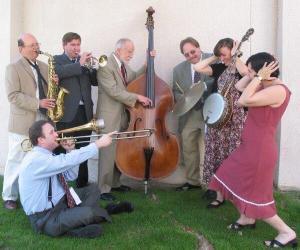
I’ve recorded and produced several albums with my own bands, including Clint Baker’s New Orleans Jazz Band: Featuring Jim Klippert and In the Groove. There are so many wonderful sessions with great players over the years that it’s impossible to list all my favorites. Fortunately Gerard Bielderman, with Rae Ann Hopkins, created a discography of my recordings as part of his Swingin’ Americans series.
In addition to playing the music, you are also an educator (classes, broadcasts, jazz camps, etc.) and have been extensively involved with the San Francisco Traditional Jazz Foundation. Can you detail some of these activities?
I’ve always taught. I started, basically, by taking middle school kids and turning them into a band and trying to get them interested in traditional jazz music. That meant teaching people as best I could, exposing them to recordings, finding records for them and resources and books, and even supplying instruments. I wanted everybody to play older instruments: old trombones, cornets instead of trumpets, and banjos and old drums; stuff like that. I never expected that I would be onstage educating and entertaining people. I just wanted to learn how to play the music because I loved the music. So I had to learn how to talk to audiences and get the facts out there, and put together a show.
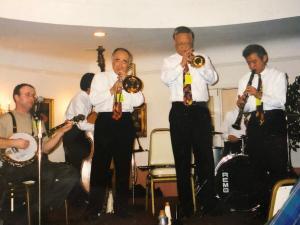
Being a bandleader is many different fields of endeavor. A big part of it is selecting songs, having ideas, and teaching execution of the songs. You communicate through music, and you need a plan that’s easy for people to understand, that communicates both to your sidemen and to your audience. You try to give them what they need so they’ll do the best work.
I started giving private trombone and tuba lessons in early high school. In the late ’90s, before my own kids were born, I was teaching at a music store. I have had a lot of really excellent students and a fair amount of success as a classical low brass teacher. However, I tend to be an advocate for traditional jazz and teaching that music to kids.
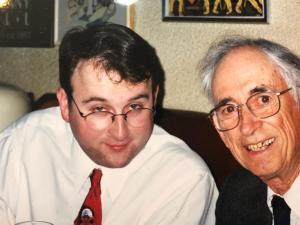
In 1997 I began teaching at the San Diego adult jazz camp, and I’ve been there ever since. I started as the cornet instructor. Then I taught bass and tuba and banjo, then alternated cornet and trombone for a couple of years. Currently I’m the cornet teacher again and also the Assistant Director of the camp.
Can you mention a few of your students who have become professional musicians?
Although I wouldn’t say I was their teacher, clarinetist Robert Barics went on to perform with the Lincoln Center Jazz Orchestra under Wynton Marsalis, and drummer Jason Hansen performed for years on the blues circuit with Little Charlie and the Nightcats. And recently my student, clarinetist Ryan Calloway, has gone on to lead his own bands.
You’ve also educated people about Traditional Jazz outside of performing. Can you talk about that?
Before I was able to collect my own recordings, I would record jazz and swing radio shows with my tape deck and I would go back and listen to them. That’s how I started collecting music. From my earliest days listening with my father, radio was always a big part of life. I believe it is a great way to educate while also entertaining. I met my wife Alisa at KCSM where she was producing and co-hosting Mal Sharpe’s show Back on Basin Street. Thanks to her, I later took over that role, which was quite a tall order because Mal was a brilliant stand-up comedian who originated “man on the street” interviews and whose mind worked at a great pace.
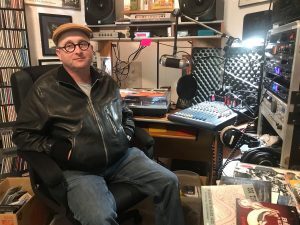
When Mal’s show ended, Alisa gave me the opportunity to start my own show, Breakfast Dance and BBQ. I’ve been producing my show since 2014; it airs on KCSM from 6:00 to 8:00 on Sunday mornings, and streams worldwide on the internet. My show is my way of paying back all of the traditional jazz and swing radio I heard when I was growing up and carrying on the tradition by talking about the music in a way that’s educational. I also pay tribute to my favorite radio personalities like Mal and Al Jazzbo Collins, who was an eccentric DJ from the 1950s to early ’80s. I look at my show as part of my educational mission. I have a couple of set pieces to start the first and second hour, but after that it all just kind of flows. I program from my large CD and record library I’ve been collecting since I was a child.
Another part of my educational mission is working with the San Francisco Traditional Jazz Foundation. In 1981, Jim Goggin started the Foundation. In addition to an educational mission, the SFTJF encompassed Jim Goggin’s large personal jazz archive, collected with the idea of creating a museum dedicated to Turk Murphy and the West Coast Great Jazz Revival. Chuck Huggins, the CEO and president of See’s Candy, got behind the SFTJF early on.
He was one of the great men of jazz in the Bay Area, and his love of jazz was legendary. Chuck was heavily involved in supporting the Turk Murphy Jazz Band, sponsoring them in concert performances and sponsoring Turk’s radio show. Chuck was also a good amateur musician. I met Chuck when he would hire additional professional musicians to join his band and play at functions. I became good friends with both Chuck and his wife Donna, who has continued Chuck’s legacy of supporting traditional jazz in the Bay Area.
In the 90s I also met Bill Carter, who was the president of the SFTJF. I performed in SFTJF concerts, and Bill and Chuck asked me to take over as archivist when Hal Smith left that role after producing a number of fine historic recordings on the SFTJF label. (Hal was preceded by John Gill, who also produced archival recordings). My role as archivist came to an end when the archive moved to Stanford University.
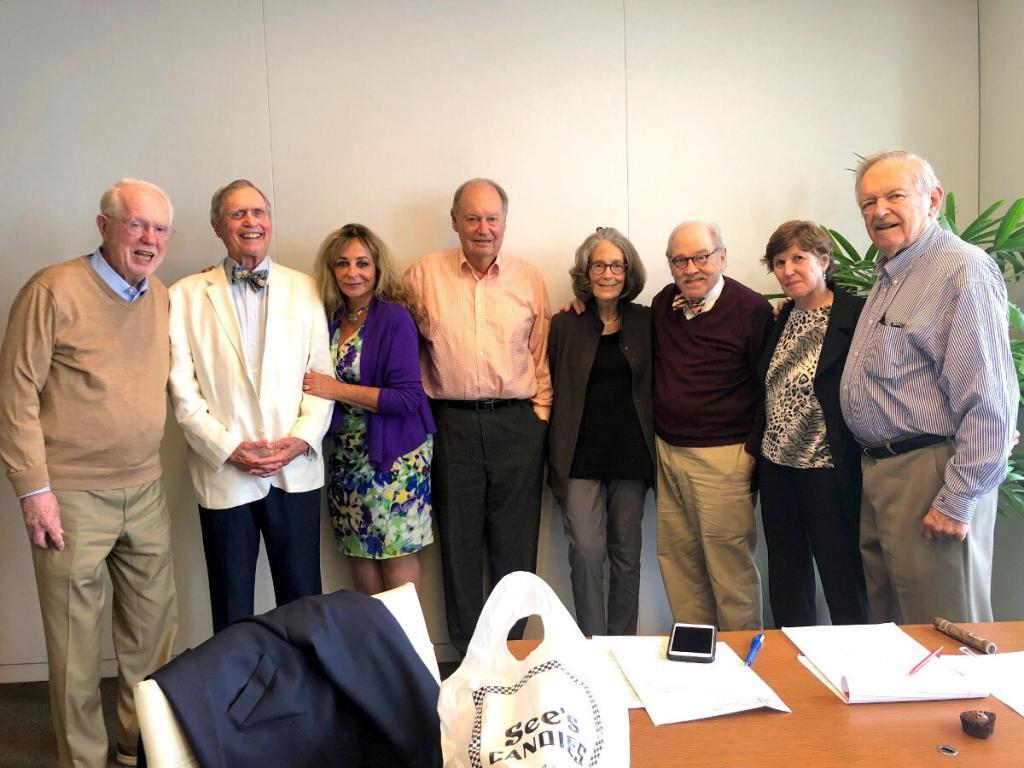
Jim Cullum, leader of Jim Cullum’s Jazz Band, was also involved with the SFTJF. I was friends with Jim and had performed with his band off and on over the years. Thanks to efforts led by Jim Cullum, Donna, and Bill, Jim Goggin’s dream to share the history of traditional jazz in San Francisco was able to come true.
[See: The Charles N. Huggins Project: The World’s Largest Online Collection of San Francisco Jazz]
I returned to work for the SFTJF in 2016, and was honored to curate a permanent online exhibit, “The Great Jazz Revival,” curating alongside Hal Smith, producer Margaret Moos Pick, filmmaker Anna Newman, and many others. And we couldn’t have succeeded without the expertise and support of Jerry McBride, Head Librarian of the Stanford Music Library and Archive of Recorded Sound and many other folks at Stanford Libraries.
[See: San Francisco Traditional Jazz Foundation’s West Coast Revival Collection Digitized]
Now there are thousands of images and hundreds of archival recordings from the SFTJF collection freely available to the public online. We even made a series of documentary films to narrate the exhibit. I’m very proud that we got to tell the stories that link traditional jazz in San Francisco to the Barbary Coast days. I feel like we were able to elevate San Francisco traditional jazz from the realm of fandom to having a place in jazz history.
How many groups have you led over the years?
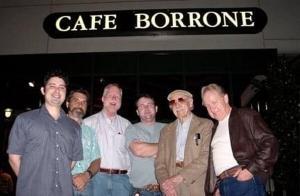
Through Café Borrone, I’ve brought a lot of people into the music. I’ve started five bands from scratch (Greasy Kid Stuff, Clint Baker’s New Orleans Jazz Band, Café Borrone All Stars, Clint Baker’s Golden Gate Swing Band, Hot Baked Goods), but the fact I’ve been able to convince enough people that traditional jazz is a worthwhile pursuit is, I find, even more satisfying.
In addition to teaching New Orleans music to the members of your band nearly 30 years ago, you continue to “pay it forward” by mentoring a number of younger musicians.
The last band I organically put together, called The Hot Baked Goods, is a dance band for swing dancers. The dance community came to me and asked for help, and I supplied them with instruments and lessons—individually, to some of them. This group also provided an early playing experience for my son Riley. Most Hot Baked Goods band members hadn’t really played music before, but they were eager and they’ve turned out to be a top dance band. In fact, Jessica King, Ryan Calloway, and Nirav Sanghani have all expanded the Bay Area swing scene by starting their own groups. Riley and I both still play with all of the groups at swing dances around the Bay Area.
You have two extremely talented young musicians in your family. Have you taken a “hands-on” approach to their musical education, or have they just pursued paths of their own making?
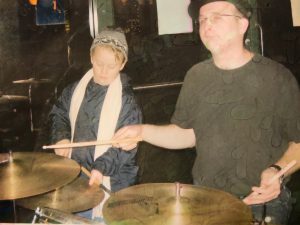
My kids, Ramona and Riley, were born in 2000. I always played music for them, all the time, and it became clear before they were 10 years old that they both were going to have some kind of musical talent. Riley used to come with me to Café Borrone, and he decided he wanted to learn to play drums. I worked with him very slowly. To get him to play, I would have him play the cymbal with me while I played sticks. We kept adding things, and eventually he was able to take over the drum set by the time he was 11 or 12, and he started sitting in with my band.
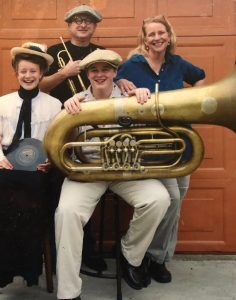
Ramona started off playing guitar. She was a big fan of The Beatles when she was younger. She wanted to learn to play the guitar. So I got her a guitar and she started figuring it out. When she turned about 12 years old, she found out that The Beatles were influenced by older forms of music. And that was her pathway to ragtime. Ramona also taught herself how to play the piano, with only a few lessons from Virginia Tichenor. She has perfect pitch and plays the piano by ear.
Riley joined the school band program in sixth grade, on tuba, but Ramona never did school music. She prefers to research independently, especially very early recording technologies, like wax cylinders. Now Riley studies jazz trombone at Cal State Northridge. He also plays the string bass. I never really sat him down and taught him any of this stuff. He just kind of learned by watching, by example, and playing with records. Now, Ramona and Riley both play professionally.
My wife Alisa Clancy is a jazz DJ and music educator. Alisa and I come from families that initially didn’t understand what we were doing. It was tough in the beginning. We never pushed Riley or Ramona to be musicians because it’s hard. But when you take away saying you can’t do this or you can’t do that, it’s amazing how people can thrive. Now we’re all in the business; a family jazz and music business.
You also share a hobby with a number of traditional jazz and swing musicians. Can you say a little bit about your non-musical interest?
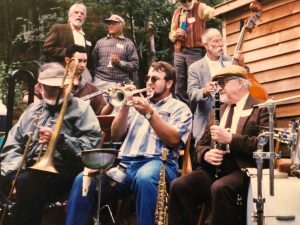
I’ve been interested in trains all my life, probably like every normal young child. The first time I saw a steam locomotive in person was probably the beginning of my interest. It’s a pretty moving experience to see an old piece of technology operating, you know, a window to the past. To watch a steam locomotive in action and understand that every kind of environmental condition affects the way it operates on any particular day is very appealing to me.
Over the years I’ve collected a huge library of train books, particularly about California and the West Coast. I’m also very interested in European narrow gauge trains. I’ve got a 45mm radio controlled railroad set up in my yard with a live steam engine. And that’s my weird hobby. I find a lot of traditional jazz musicians are interested in trains!
Are there any musical projects you would like to pursue now, or in the future?
I had scheduled a recording session for the end of May, but it had to be canceled because of Covid-19. I do have a recording in the works right now for Clint Baker’s Hot Four, which features Robert Young, Bill Reinhart, Don Neeley—leader of Royal Society Jazz Orchestra—and myself. I hope to get it out in the next few months. I also have a recording from 2007 that I’ve been told by some people is pretty good and I have plans to put that out also. So look for something like a Clint Baker Bandcamp account and new material coming out this year.
What is the secret to success in traditional jazz, or any music, for that matter?
You really have to be dedicated. You’ve got to spend the time listening to the old records. And you’ve got to be able to listen to things critically. Critical listening is really the key. Being able to hear the music and enjoy it is one level. But dig deeper and figure out what you’re hearing. Listen to the parts, what everybody’s doing, and try to make sense of it.
That’s the practical level. But really it’s just having the interest and caring about the music. I’ve been so fortunate to follow this path with other folks like Marc Caparone, Katie Cavera, Dawn Lambeth, Sam Rocha, Monte Reyes, Tom Wilson, Steve Apple and Marty Eggers. Surrounding yourself with other people who inspire you is critical. Every week I get to play with wonderful musicians like Jeff Hamilton, Bill Reinhart, Jessica King, Bill Carter, Mikiya Matsuda, Robert Young, Ryan Calloway, and my son Riley. The opportunity to play with a multi-generational group at a regular venue with loyal fans and new listeners, like beautiful Café Borrone, is the ideal situation. Mostly my secret is passion. More than being a bandleader or recording or teaching, I just want to make the music come alive. As Gustav Mahler says, “Tradition is not the worship of ashes, but the preservation of fire.”
Sincere thanks to Anna Newman for assistance in transcribing this interview.
CLINT BAKER SELECTED DISCOGRAPHY
Azica
AJD-72241 Hot Club of San Francisco “Bohemian Maestro: Django Reinhardt and the Impressionists”
Big Al
BACD 701 On The Levee Jazz Band “Swinging New Orleans Jazz For Dancing…Or Just Listening”
Delmark
DE 772 William Warfield “Something Within Me”
Elysian Fields
EFOCD 401 Clint Baker’s New Orleans Jazz Band “Tears”
GHB
BCD 526 Yerba Buena Stompers “The Gospel According to the Yerba Buena Stompers”
Grand Dominion Jazz Band
“Keeping The Spirit Alive”
Jazzology
JCD 375 Ray Skjelbred and his Cubs “Greetings From Chicago”
Stomp Off
SOS 1298 Chris Tyle’s Silver Leaf Jazz Band vol. 2 “Sugar Blues”
SOS 1418 Yerba Buena Stompers vol. 5 “Yama Yama Man”
Triangle Jazz
T 123 CD Hal Smith’s Roadrunners “Waiting At The End Of The Road”
For more detailed information regarding Clint Baker’s recordings, please visit:
Clint Baker’s Jazz Site Discography Page
Gerard Bielderman “Swingin’ Americans” Discographies
VIDEO LINKS
Café Borrone All Stars
“Bill Bailey, Won’t You Please Come Home?”
Clint Baker’s Hot Six
Clint Baker’s New Orleans Jazz Band
1992 New Orleans Jazz & Heritage Festival
with Jim Leigh, Tom Sharpsteen and Mike Fay
“My Heart at Thine Sweet Voice”
Jazz Bash at the Bay 2020 with Ryan Calloway, Riley Baker, Jessica King
“St. Philip Street Breakdown”
Golden Gate Swing Band
Grand Dominion Jazz Band
Hot Club of San Francisco
International Sextet and Friends
“Love Is Just Around The Corner”
Tim Laughlin’s New Orleans All-Stars with Connie Jones
New El Dorado Jazz Band
On The Levee Jazz Band
Ray Skjelbred and his Cubs
Yerba Buena Stompers
Hal Smith is an Arkansas-based drummer and writer. He leads the El Dorado Jazz Band and the
Mortonia Seven and works with a variety of jazz and swing bands. Visit him online at
halsmithmusic.com























